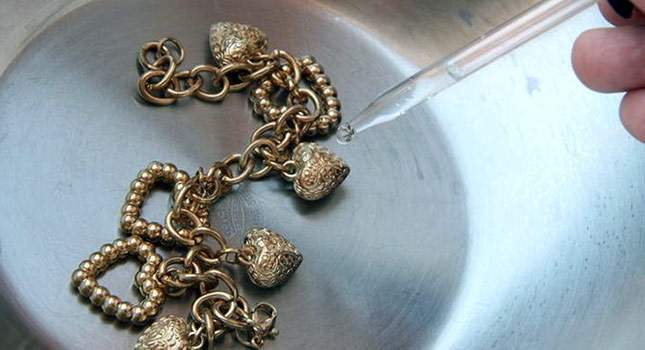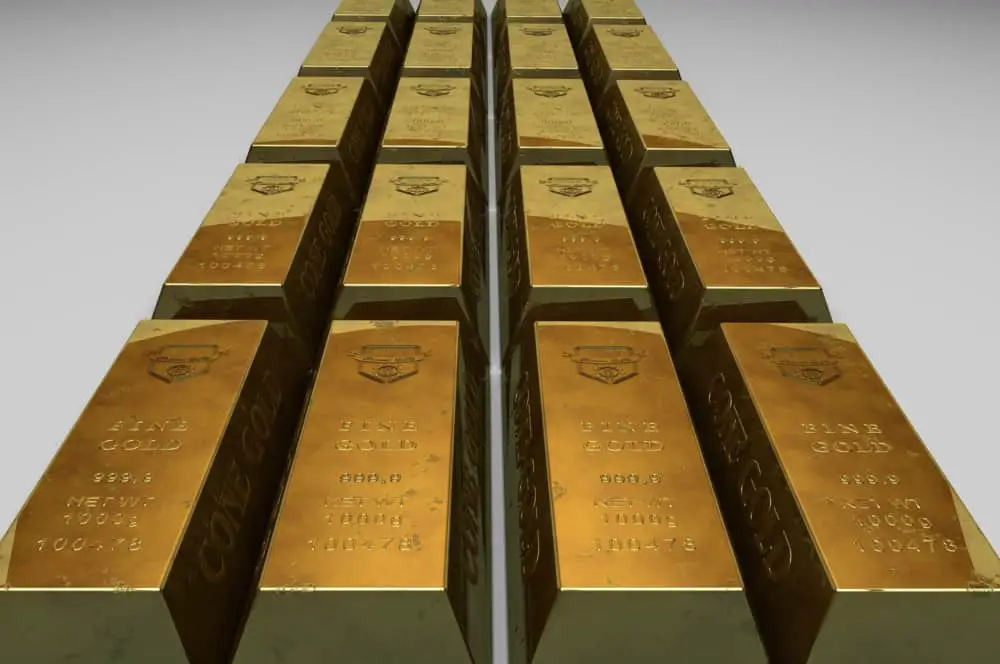Table of Contents
A harsh reality of the precious metals industry is that testing is always necessary. This is not only necessitated by predatory vendors, but also by their high value which causes small fluctuations in purity to carry drastic price differences. Not to mention, it is an important precaution for all buyers since testing can give additional peace-of-mind about the security of your purchase.
*This post may contain affiliate links. As an Amazon Associate we earn from qualifying purchases.
No matter if you are buying or selling, testing precious metals is the best way to ensure a fair and transparent transaction.
To protect yourself, we recommend running your own test immediately after purchasing any precious metal. By contrast, we also advise testing your metals immediately prior to selling. This protects you against potential legal liabilities and will help guarantee customer satisfaction.
All precious metals—gold, silver, platinum, and palladium—are natural chemical elements found on the periodic table. Fortunately for you, those same laboratory tests you ran in 10th-grade chemistry classes are still used by scientists and metal traders today.
There are several ways to test both the authenticity and purity of your precious metals. These methods range from a typical high school chemistry project to big-budget biomedical machinery. Deciding which testing method is appropriate for you can get confusing. That’s why we’ve done the heavy lifting for you and compiled this in-depth guide to take the hassle out of metal testing.
Common Testing Methods
To gather accurate results, there is perhaps no decision more important than choosing the right testing method. There are four commonly used techniques for testing precious metals, each of which have their unique set of advantages and disadvantages. Read each carefully to find out which is right for you.
Touchstone and Acid Tests

There’s no testing method older than the good-old-fashioned touchstone test. Taking back to Antiquity, this technique has been used to roughly verify the purity and identity of precious metals.
This technique involves the rubbing of the metal against a touchstone that contains the rubbings of other substance samples coated with a mixture of acids known as Aqua Regia. The onlooker then observes how the color of the rubbing changes and dissolves over time when compared to the reference sample.
Touchstone tests are accurate to roughly 15 parts per thousand. This is comparatively weak relative to alternate tests, but it has the benefit of being both affordable and entirely non-destructive.
Aqua Regia
Sometimes testing precious metals can get messy. Aqua Regia is no exception. Aqua Regia is an acidic solution used in touchstone tests. The mixture is extremely dangerous as it is highly corrosive and will burn most substances it comes in contact with. The fumes that Aqua Regia emits is also toxic and can cause severe burning of the lungs.
For this reason, tests involving Aqua Regia are best left to the professionals. We do not advise any hobbyist or collector to conduct tests of this nature from home. Further, we strongly advise against concocting the acidic solution and handling it outside of a secure laboratory. Instead, ask your local jeweler about Aqua Regia and if they would be comfortable using it.
Fire Assay and Cupellation Method

The Fire Assay Method, otherwise known as the Cupellation Method, analyzes gold with the highest level of accuracy. Measuring between 2 and 3 parts per thousand, this method involves the use of a sample size of usually 0.25 of a gram of the substance in question. Most hallmarking authorities around the world employ the Fire Assay Method.
The substance is then heated and dissolved in nitric acid which isolates the pure gold. This also detects the silver content in most silver alloy materials. While this is often heralded as the perfect assay method for gold bullion, it is completely destructive. This means that it is not suitable for testing gold contained in art or jewelry.
Electronic Gold Detectors
Electronic gold detectors are portable devices that are useful for identifying karat in gold. However, their readings are often inaccurate when compared to other tests. This is because they are often correct only within 1 or 2 karats (4-8% accuracy range). They are also prone to damaging gold-plated surfaces. For this reason, they are often inappropriate for casual testers.
X-Ray Fluorescence (XRF) Tests
X-ray fluorescence tests are costly for basic assaying purposes, but the results are worth their weight in gold. Using x-ray technology, XRF scans are completely non-destructive to the bullion. Additionally, they have an accuracy range between 2 and 5 parts per thousand. According to KMG Gold, most tests take no more than 3 minutes to print off a detailed analysis report.
XRF testers are often considered the most accurate on the market, as they spectrometers that are able to classify the premise chemical components of the substance it tests. X-ray analysis software is then able to detect the relative purity of the chemicals found by the spectrometer.
There are a number of trusted brands on the market that are known for delivering reliable results. Among them is Thermo Fisher Scientific’s “Niton” portable x-ray fluorescence analyzers. These high-tech machines yield speedy and nondestructive test results with pinpoint accuracy. For heavier lab use, we recommend Amptek’s Experimenter’s XRF Kit.
Tips for Testing Metals
Every precious metal enthusiast needs to know how to tell if their precious metals are real. Sometimes, this needs to be done on the spot. When a formal testing kit isn’t handy, you need to know how to eyeball an item to get a sense of its authenticity. Here are some of the best insider tips to tell apart a piece of gold or silver from a phony.
Size It Up
When testing precious metals, the first step is simple. If you have a sample that you know to be authentic, such as a hallmarked gold coin, compare it to the coin in question. The diameter, thickness, weight, and density should all appear the same. Using a trusted portable scale will help you gauge weight and density quickly.
The “Ping” Test

Once you have done the eyeball test, it’s time for the ear test. Every bullion owner should know that real gold and silver coinage makes a loud, reverberant chiming noise when struck against a metal. Regular base metals will sound duller by contrast. Try striking the coin in question against another coin, then compare it to a base metal coin for reference.
Or, if you don’t have a reference coin on hand, you can try some of the several mobile apps available on the market. Currently, the CoinTrust app is available for purchase on Google Play and the App Store. This app conveniently simulates the sounds of various precious and base metals being struck, which gives you a sense of what to expect from each.
The Magnet Test
“Is silver magnetic?” “Is my gold coin supposed to cling to my refrigerator?” These are questions we hear constantly from those new to the industry. The simple answer is no, neither gold or silver are magnetic.
This is an easy way to detect a counterfeit coin. At the point of purchase, carry a strong magnet with you. If the coin slides off the magnet at freefall speed, then it’s likely the real deal. However, if it clings or shows resistance against the magnetic surface then it is almost guaranteed to be a dud.
The Thermal Test

Here’s a fun fact: silver is one of nature’s best conductors of energy. And luckily for you, this makes testing silver especially easy. All it requires is a simple ice cube. Once you have an ice cube on hand, place the cube on top of your silver bullion or coin. If you notice it begin to melt right away, then the silver is transferring thermal energy as it should.
Once you remove the ice cube, place it between two of your fingers. The coin should feel cold, but it will adjust to base temperature quickly if it is authentic. This two-part test is used for determining the conductivity of sterling silver, which is a key indicator of its authenticity.
Test, Test, and Retest
Once you have exhausted all other options, it’s time to run a formal test. For this, you need to pick up a reliable silver and gold testing kit.
For casual enthusiasts and investors, we recommend a basic Touchstone testing kit such as the JSP PuriTEST. However, users should remember that the Aqua Regia solution used in these kits are highly toxic. For this reason, we advise using the utmost care when handling these tests or asking your local jeweler to conduct the test for you.
Those averse to handling corrosive substances may opt for an affordable alternative to Aqua Regia tests. For this, you need to invest in a fire assay kit. Our recommendation is the Shor Fire Assay System, an industry leader in assay testing since 1979.
For vendors, or those running laboratory tests, we recommend XRF analyzers. These offer the best quality testing results without the effects of degradation. For reliable results, we recommend the Bruker XRF Gold Tester Gun.

